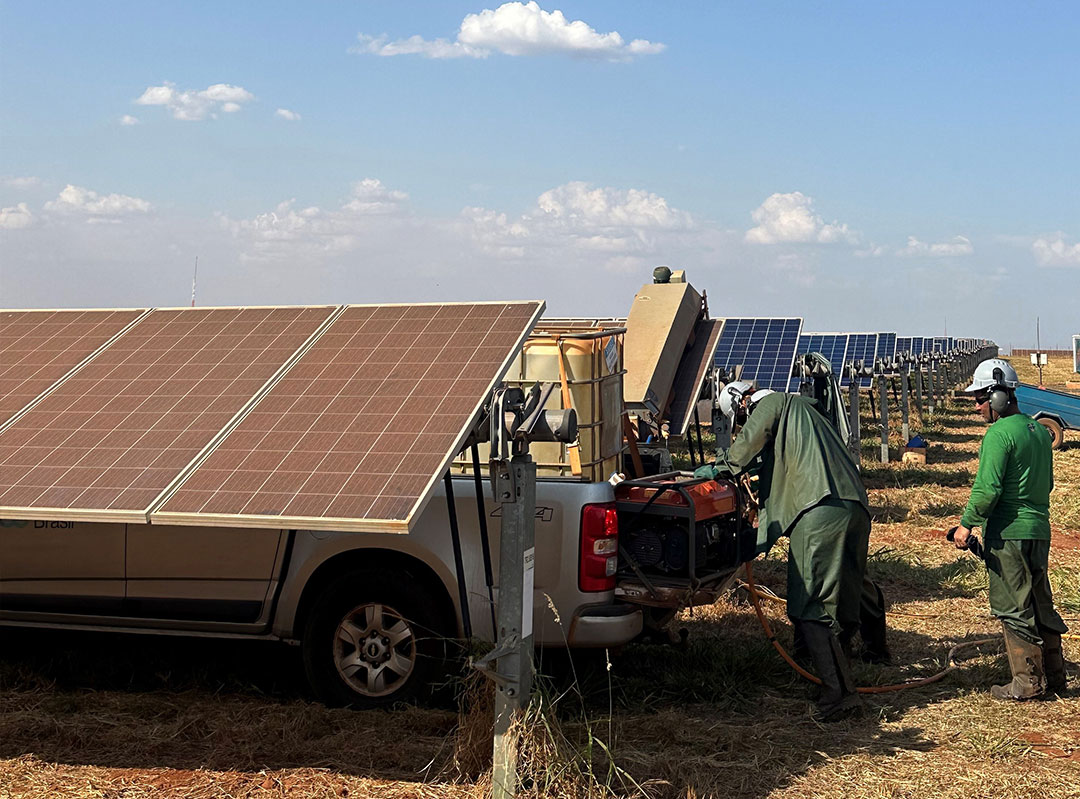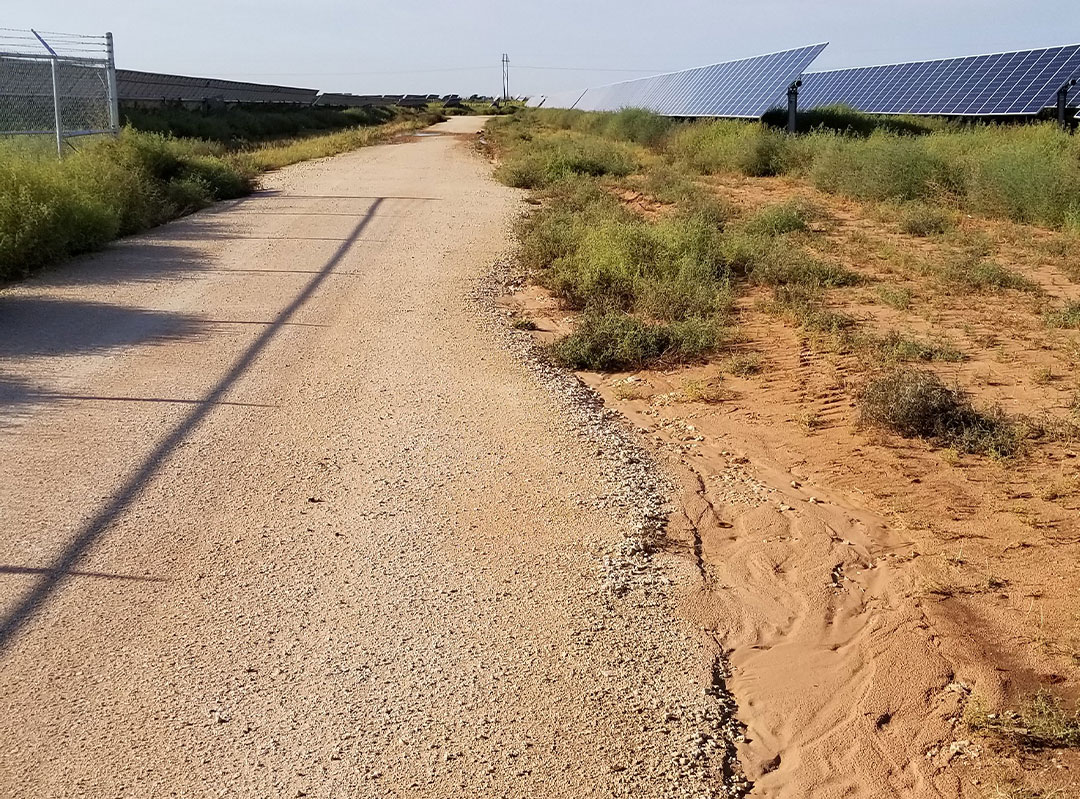
The Problem of Dust and Soil Erosion Impacting Solar Efficiency
Solar farms are often located in dry, open areas where wind and soil erosion can generate significant dust. Dust accumulation on solar panels can significantly reduce their efficiency, with studies showing losses ranging from 15% to over 50% depending on environmental conditions and the duration of dust exposure. Regular cleaning is time-consuming, costly, and can be water-intensive, particularly in arid locations. Additionally, unstable soil conditions can lead to erosion around the panels, requiring further site maintenance.
A Practical Solution for Dust Control and Surface Stabilization

An AggreDust solution addresses a range of renewables site challenges. By treating access roads, firebreaks, pathways, and open areas, AggreDust binds loose soil particles, preventing dust from being stirred up by wind, construction activity and vehicles.
In arid and dry locations, where loose soils are prone to erosion, AggreDust effectively stabilizes the ground by forming a durable surface layer and reducing the potential for dust storms and erosion around the installation, effectively preventing delays or interruptions in ongoing operations. For slopes, embankments or uneven terrain, AggreDust plays a critical role in slope stabilization, helping to prevent soil displacement and landslides, and ensuring long-term stability of the site infrastructure.
The flexibility of AggreDust means that it can be tailored to various terrains and site needs, allowing solar projects to better withstand environmental challenges like wind erosion or foot and vehicle traffic without compromising the surrounding ecosystem and worker health and safety. It is applied through simple dilution and spraying, making it easy to integrate into new installations and existing sites for improved stability or dust control.
How AggreDust Works
AggreDust uses AggreBind’s patented long-string cross-linking copolymer to bind surface soil particles together to create a stable and durable surface. Depending on environmental conditions such as temperature and humidity, AggreDust typically takes only a few hours to cure, and to create a long-lasting surface that is resistant to wind and water erosion.
Benefits for Solar Projects
Increased Solar Efficiency: Reduces dust accumulation on panels, improving light capture and energy production.
Environmental Safety: AggreDust is non-toxic, non-hazardous, non-leaching and environmentally friendly. It minimizes water usage and prevents soil erosion without harming the surrounding ecosystem.
Long-Term Stability: Once applied, the stabilized surface is durable, reducing the need for repeated applications, and protecting the solar site from erosion and destabilized embankments over the long term.
For solar projects, dust control solutions like AggreDust are crucial for maintaining panel performance and minimizing maintenance costs. By applying AggreDust, solar farms can maintain optimal solar panel efficiency, reduce dust build up, minimise operational costs, and help solar farms sustain higher energy output over time, improving the overall efficiency of the installation.
